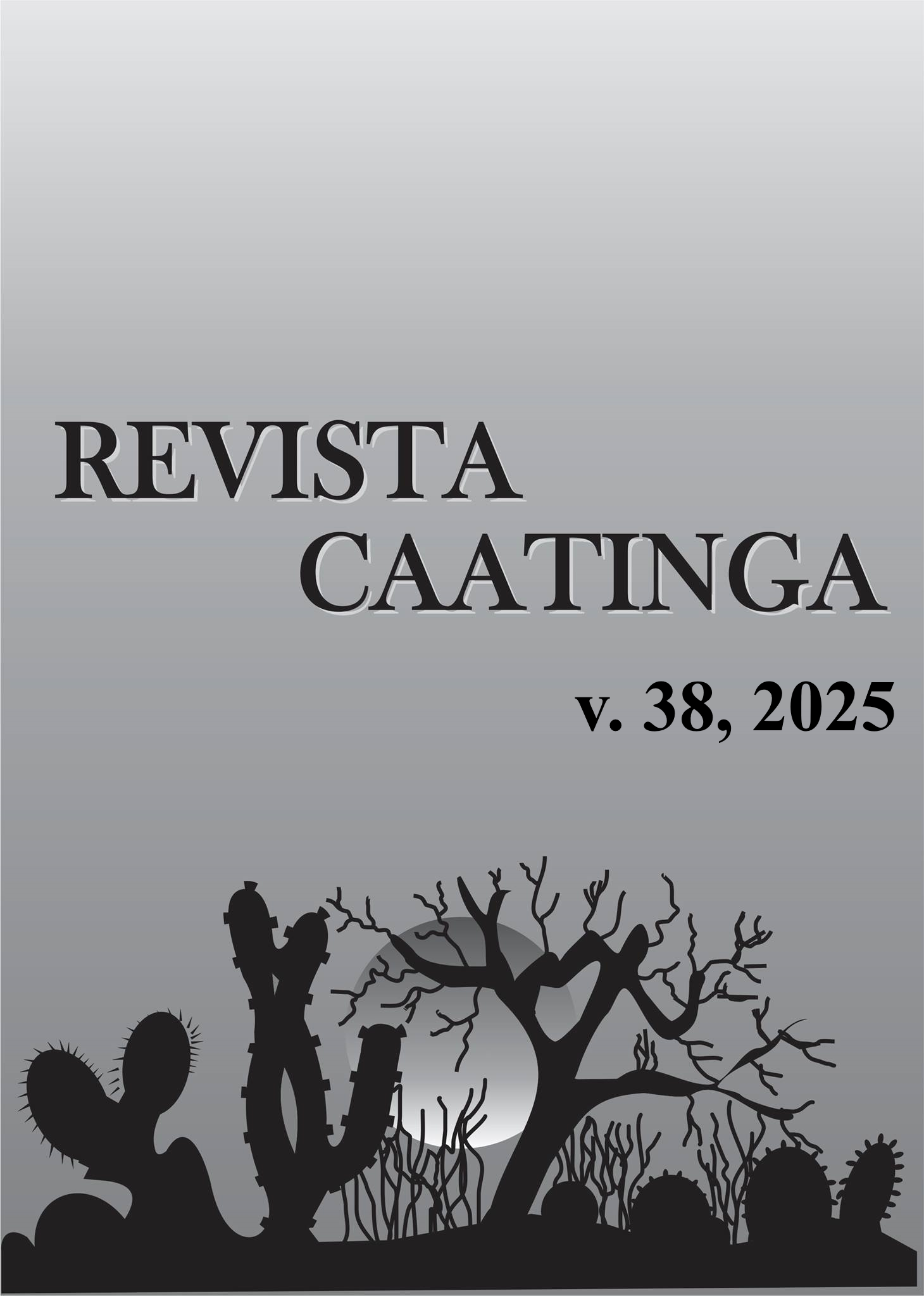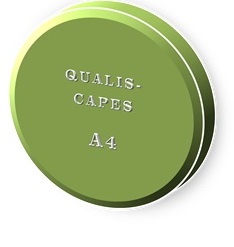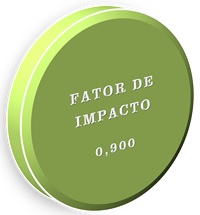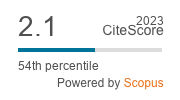Resistance response of cowpea accessions to charcoal rot
DOI:
https://doi.org/10.1590/1983-21252025v3812519rcKeywords:
Vigna unguiculata (L.) Walp. Macrophomina phaseolina. Genetic resistance. Root diseases.Abstract
The objective of this study was to assess the resistance reaction of cowpea accessions grown in municipalities of Rio Grande do Norte, Brazil, to the fungus Macrophomina phaseolina (Tassi) Goid. A total of 53 cowpea accessions were evaluated in two greenhouse experiments (25 and 28 accessions, respectively), using a completely randomized design with five replications; each replication consisted of one plant per pot. The fungus was isolated from cowpea plants showing charcoal rot symptoms. Fungi were cultured and purified on a potato-dextrose-agar (PDA) medium with tetracycline (0.05 mg mL-1) and then inoculated into cowpea plants using the toothpick method. Inoculation was carried out when the plants exhibited two true leaves. The disease response of accessions was evaluated 30 days after inoculation based on a disease severity scale. Transformed data were subjected to analysis of variance, and means were grouped using the Scott-Knott test (p < 0.05). Accessions 6, 14, 17, 30, 42, 43, 46, 48, and 50 were highly resistant to M. phaseolina and, therefore, can be included in breeding programs focused on resistance to pathogens. The results indicate a predominance of genes conferring resistance to M. phaseolina in cowpea accessions from the Agreste mesoregion of Rio Grande do Norte, Brazil.
Downloads
References
ABAWI, G. S.; PASTOR-CORRALES, M. A. Root rots of beans in Latin America and Africa: diagnoses, research methodologies and management strategies. Cali: Centro Internacional de Agricultura Tropical, 1990. 114 p. (CIAT publicações, 35).
ARAÚJO, K. M. G. et al. Identification of sources of resistance against charcoal rot in cowpea. Revista Caatinga, 35: 548-556, 2022.
BASANDRAI, A. K. et al. Macrophomina phaseolina–host interface: Insights into an emerging dry root rot pathogen of mungbean and urdbean, and its mitigation strategies. Plant Pathology, 70: 1263-1275, 2021.
CAFÉ-FILHO, A. C.; LOPES, C. A.; ROSSATO, M. Management of plant disease epidemics with irrigation practices. In: ONDRASEK, G. (Ed.). Irrigation in agroecosystems. London, UK: IntechOpen, 2019. cap. 8, p. 123-142.
CHATTANNAVAR, S. N.; VINAYAKA, A. B. Field evaluation of sorghum genotypes against charcoal rot caused by Macrophomina phaseolina (Tassi) Goid. Journal of Pharmacognosy and Phytochemistry, 9: 1654-1655, 2020.
FAO – Food Agriculture Organization of the United Nations. Countries by commodity. 2023. Available at: <http://www.fao.org/faostat/en/#data/QC/visualize>. Access on: Dez. 4, 2023.
GARCÍA, M. E. M. et al. Reaction of lima bean genotypes to Macrophomina phaseolina. Summa Phytopathologica, 45: 11-17, 2019.
ISHIKAWA, M. S. et al. Seleção de cultivares de soja para resistência à podridão negra da raiz (Macrophomina phaseolina). Summa Phytopathologica, 44: 38-44, 2018.
KOTUE, T. C. et al. Nutritional properties and nutrients chemical analysis of common beans seed. MOJ Biology and Medicine, 3: 41-47, 2018.
LIMA, L. R. L. et al. Diallel crosses for resistance to Macrophomina phaseolina and Thanatephorus cucumeris on cowpea. Genetics and Molecular Research, 16: 1-11, 2017.
LINHARES, C. M. S. et al. Effect of temperature on disease severity of charcoal rot of melons caused by Macrophomina phaseolina: implications for selection of resistance sources. European Journal of Plant Pathology, 158: 431-441, 2020.
LODHA, S.; MAWAR, R. Population dynamics of Macrophomina phaseolina in relation to disease management: a review. Journal of Phytopathology, 168: 1-17, 2019.
MARQUEZ, N. et al. Macrophomina phaseolina: general characteristics of pathogenicity and methods of control. Frontiers in Plant Science, 12: 1-16, 2021.
MEDEIROS, A. C. et al. Métodos de inoculação de Rhizoctonia solani e Macrophomina phaseolina em meloeiro (Cucumis melo). Summa Phytopathologica, 41: 281-286, 2015.
MULLINS, A. P.; ARJMANDI, B. H. Health benefits of plant-based nutrition: focus on beans in cardiometabolic diseases. Nutrients, 13: 1-16, 2021.
PANDEY, A. K. et al. Identification of new sources of resistance to dry root rot caused by Macrophomina phaseolina isolates from India and Myanmar in a mungbean mini-core collection. Crop Protection, 143: 1-12, 2021.
PIMENTEL-GOMES, F. Curso de estatística experimental. 12. ed. São Paulo, SP: Nobel, 1985. 467 p.
R CORE TEAM. R: A language and environment for statistical computing. R Foundation for Statistical Computing, Vienna. Avaliable at: <https://www.R-project.org>. Access on: Jun. 10, 2023.
REZNIKOV, S. et al. Soybean-Macrophomina phaseolina-specific interactions and identification of a novel source of resistance. Phytopathology, 1: 63-73, 2019.
RESENDE, M. D. V.; DUARTE, J. B. Precisão e controle de qualidade em experimentos de avaliação de cultivares. Pesquisa Agropecuária Tropical, 37: 182-194, 2007.
SILVA FILHO, A. J. R. et al. Reação de acessos de feijão-caupi a Macrophomina phaseolina por meio da inoculação no colo da planta. In: CONGRESSO NACIONAL DE FEIJÃO-CAUPI, 3., 2013, Recife. Anais... Recife: Embrapa Meio Norte, 2013.
SOUZA, E. M. S. et al. Inoculation methods and agressiveness of Macrophomina phaseolina isolates in cowpea. Ciência Rural, 52: e20210072, 2022.
SANTOS, G. G. et al. Genetic diversity among bean landraces and cultivars for agronomy traits and selection of superior parents. Revista Ciência Agronômica, 53: e20217873, 2022.
VALE, J. C.; BERTINI, C.; BORÉM, A. Feijão-caupi: do plantio à colheita. 1. ed. Viçosa, MG: UFV, 2017. 267 p.
Downloads
Published
Issue
Section
License
Os Autores que publicam na Revista Caatinga concordam com os seguintes termos:
a) Os Autores mantêm os direitos autorais e concedem à revista o direito de primeira publicação, com o trabalho simultaneamente licenciado sob a Licença Creative Commons do tipo atribuição CC-BY, para todo o conteúdo do periódico, exceto onde estiver identificado, que permite o compartilhamento do trabalho com reconhecimento da autoria e publicação inicial nesta revista, sem fins comerciais.
b) Os Autores têm autorização para distribuição não-exclusiva da versão do trabalho publicada nesta revista (ex.: publicar em repositório institucional ou como capítulo de livro), com reconhecimento de autoria e publicação inicial nesta revista.
c) Os Autores têm permissão e são estimulados a publicar e distribuir seu trabalho online (ex.: em repositórios institucionais ou na sua página pessoal) a qualquer ponto antes ou durante o processo editorial, já que isso pode gerar alterações produtivas, bem como aumentar o impacto e a citação do trabalho publicado (Veja O Efeito do Acesso Livre).







